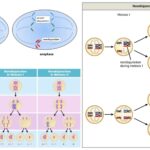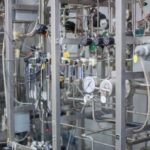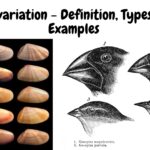AS and A Level Biology 43 Views 1 Answers
Sourav PanLv 9November 1, 2024
Describe the differences between structural genes and regulatory genes and the differences between repressible enzymes and inducible enzymes
Describe the differences between structural genes and regulatory genes and the differences between repressible enzymes and inducible enzymes
Please login to save the post
Please login to submit an answer.
Sourav PanLv 9May 15, 2025
The concepts of structural genes and regulatory genes, as well as the differences between repressible and inducible enzymes, are fundamental to understanding gene expression and metabolic regulation in cells. Here’s a detailed description of each:
Differences Between Structural Genes and Regulatory Genes
- Structural Genes:
- Definition: Structural genes are segments of DNA that code for proteins or RNA molecules that have a functional role in the organism. These proteins can be enzymes, structural components, or molecules involved in cell processes.
- Function: The primary function of structural genes is to produce the proteins necessary for cellular structure and function. Examples include genes coding for enzymes involved in metabolism (like hexokinase) or structural proteins (like actin).
- Expression: The expression of structural genes results in the production of specific products that contribute to the phenotype of the organism. Their expression can be regulated by various mechanisms, including the action of regulatory genes.
- Regulatory Genes:
- Definition: Regulatory genes are segments of DNA that encode proteins or RNA molecules that control the expression of one or more other genes. These proteins often act as transcription factors or repressors.
- Function: The primary function of regulatory genes is to regulate the timing, location, and amount of expression of structural genes. They ensure that genes are turned on or off as needed in response to internal and external signals. For example, the lac repressor in the lac operon of bacteria inhibits the expression of genes required for lactose metabolism in the absence of lactose.
- Mechanisms: Regulatory genes can exert their effects through mechanisms like binding to DNA (enhancers or silencers), interacting with RNA polymerase, or influencing chromatin structure.
Differences Between Repressible Enzymes and Inducible Enzymes
- Repressible Enzymes:
- Definition: Repressible enzymes are typically involved in biosynthetic pathways and can be inhibited (or repressed) when their end product is present in sufficient quantities. They are usually regulated by feedback inhibition.
- Mechanism of Action: When the concentration of the end product (e.g., amino acids, nucleotides) increases, it binds to a regulatory protein that interacts with the promoter region of the gene coding for the enzyme, inhibiting its transcription. This prevents the synthesis of the enzyme when it is no longer needed.
- Example: An example is the tryptophan operon in E. coli, which is repressed when tryptophan levels are high. In this case, tryptophan acts as a corepressor, binding to the repressor protein and enabling it to bind to the operator, blocking transcription of the genes involved in tryptophan synthesis.
- Inducible Enzymes:
- Definition: Inducible enzymes are typically involved in catabolic pathways and are produced in response to specific substrates or signals. Their expression is turned on (or induced) when the substrate is present.
- Mechanism of Action: The presence of the substrate (inducer) leads to the binding of the inducer to a regulatory protein, which allows the transcription of the genes coding for the enzyme to occur. This enables the organism to respond to environmental changes by producing enzymes only when necessary.
- Example: An example is the lac operon in E. coli, which is induced in the presence of lactose. When lactose is available, it binds to the lac repressor, causing it to release from the operator region, allowing transcription of the genes necessary for lactose metabolism.
0
0 likes
- Share on Facebook
- Share on Twitter
- Share on LinkedIn
0 found this helpful out of 0 votes
Helpful: 0%
Helpful: 0%
Was this page helpful?




